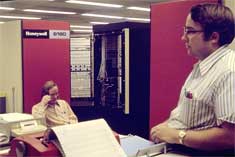

An opportunity to test this hypothesis arises from coprolites to some extent extruded from an immature cockroach preserved in the amber of Lebanon, studied using synchrotron X-ray microtomography. Candidates for these duties are extinct cockroaches (Blattulidae), whose temporal range is associated with herbivorous dinosaurs. But who cleaned up after them? Dung beetles and flies with rapid development were rare during most of the Mesozoic. VrÅ¡anský, Peter van de Kamp, Thomas Azar, Dany Prokin, Alexander VidliÄka, L'ubomÃr VagoviÄ, Patrikĭinosaurs undoubtedly produced huge quantities of excrements. This might in turn have served as a preadaptation that prevented mycosis as these phylogenetically related taxa diverged and evolved respectively into subsocial and eusocial organizations.Ĭockroaches probably cleaned up after dinosaurs. Because Cryptocercidae cockroaches have been considered appropriate models to make inferences about the factors fostering the evolution of termite sociality, we suggest that nesting in microbe-rich environments likely selected for the coupling of intranest defecation and feces fungistasis in the common ancestor of wood cockroaches and termites. Filtration experiments indicate that the fungistatic activity of feces results from chemical interference. When feces were boiled or when they were subjected to ultraviolet radiation and subsequently incubated with conidia, viability was "rescued" and germination rates were similar to those of controls. Instead, the antifungal compound(s) of the feces involved heat-sensitive factor(s) of potential microbial origin. Hence, these enzymes are unlikely the source of the fungistasis. Although the cockroach's hindgut contained abundant β-1,3-glucanase activity, its feces had no detectable enzymatic function. Relative to controls, the viability of fungal conidia was significantly reduced following incubation with feces and was negatively correlated with incubation time. Conidia of the entomopathogenic fungus, Metarhizium anisopliae, were incubated with crushed feces and subsequently plated on potato dextrose agar. We tested the hypothesis that defecation within their nests, a common occurrence in this species, reduces the probability of fungal development. The wood cockroach Cryptocercus punctulatus nests as family units inside decayed wood, a substrate known for its high microbial load. Nest sanitation through defecation: antifungal properties of wood cockroach feces The studies showed that snags and logs are also important habitats of wood cockroaches in pine forests. Cockroach population density samples were conducted on live pine trees, dead snags and coarse woody debris on the ground. These woodpeckers forage on the boles of live pine trees, but their prey consists of a high proportion of wood cockroaches, Parcoblatta spp., that are more commonly associated with dead plant material.

Wood cockroaches are an important prey of the red-cockaded woodpecker, Picoides borealis, an endangered species inhabiting pine forests in the southern United States. Life history and habitat associations of the broad wood cockroach, Parcoblatta lata (Blattaria: Blattellidae) and other native cockroaches in the Coastal Plain of South Carolina.Įnergy Technology Data Exchange (ETDEWEB)


 0 kommentar(er)
0 kommentar(er)
